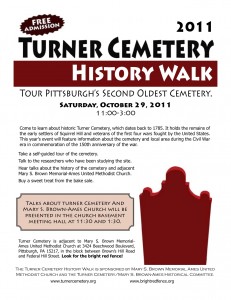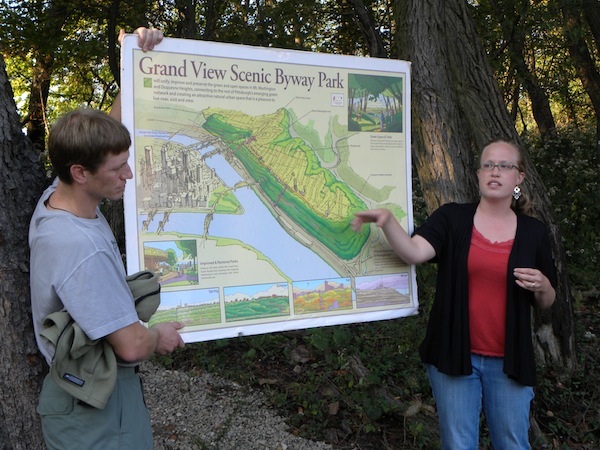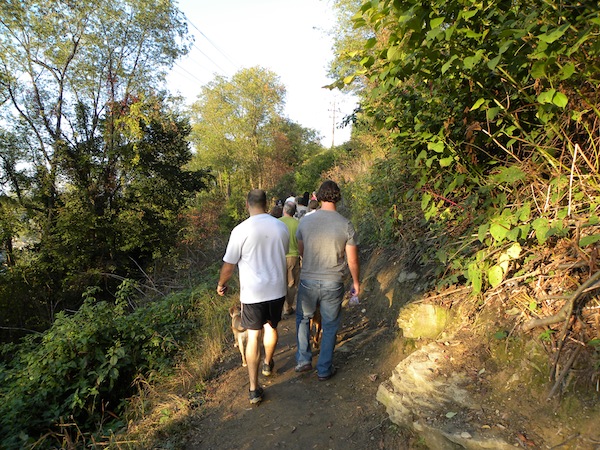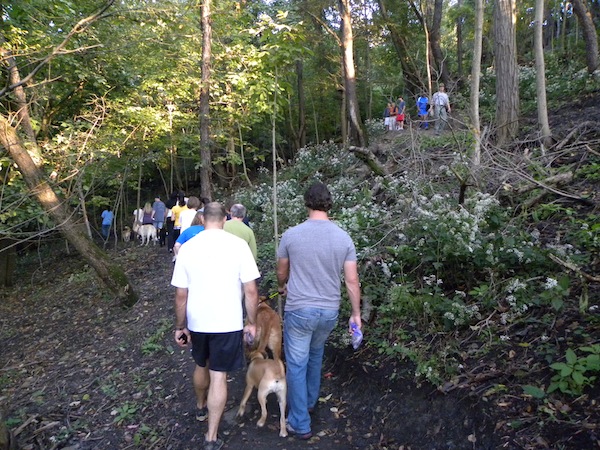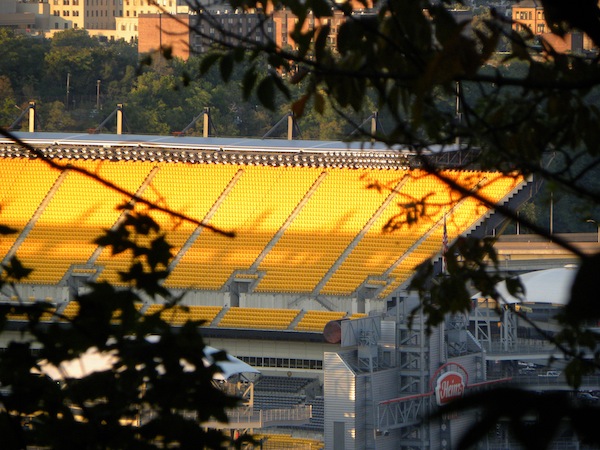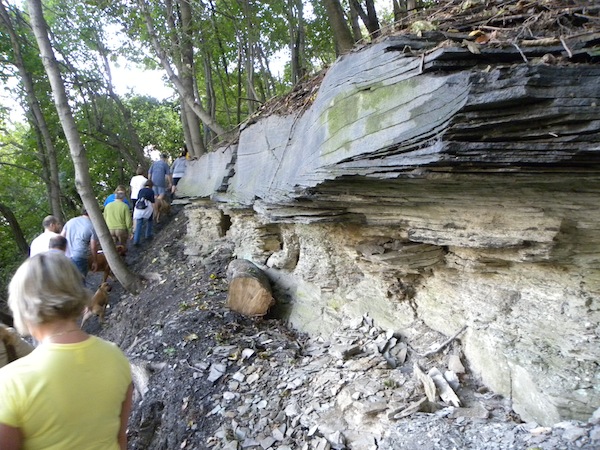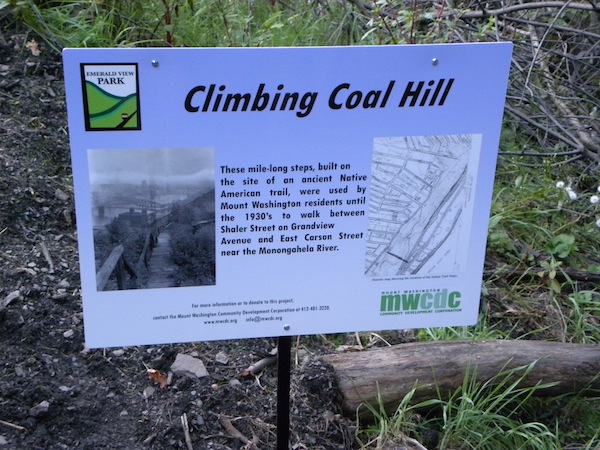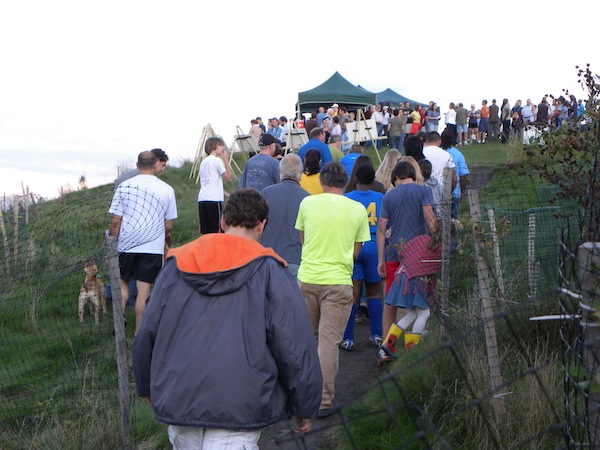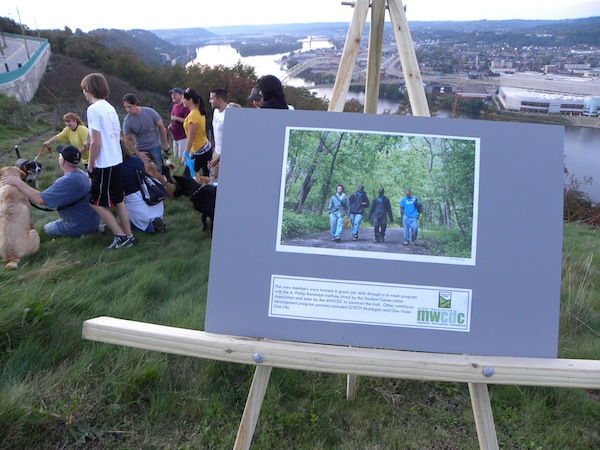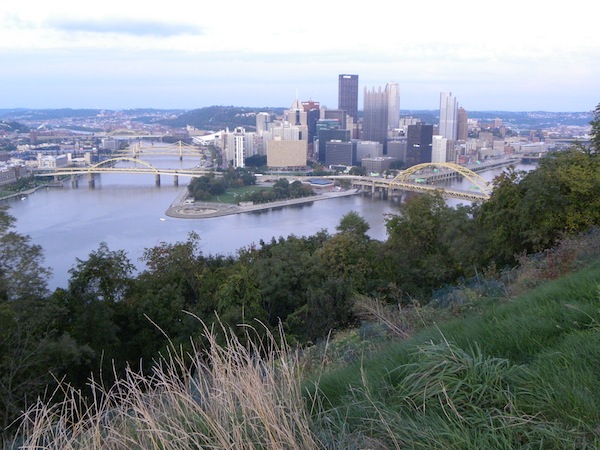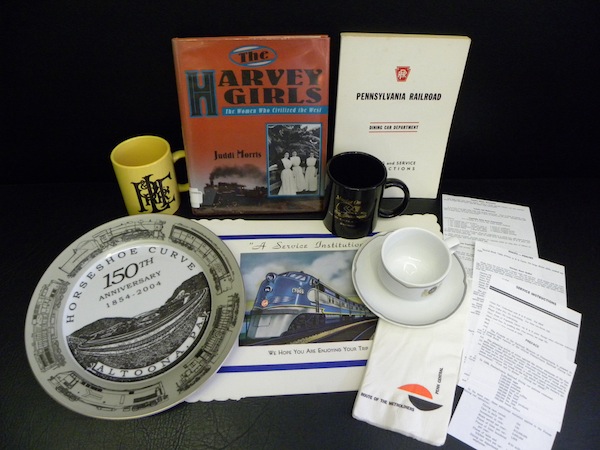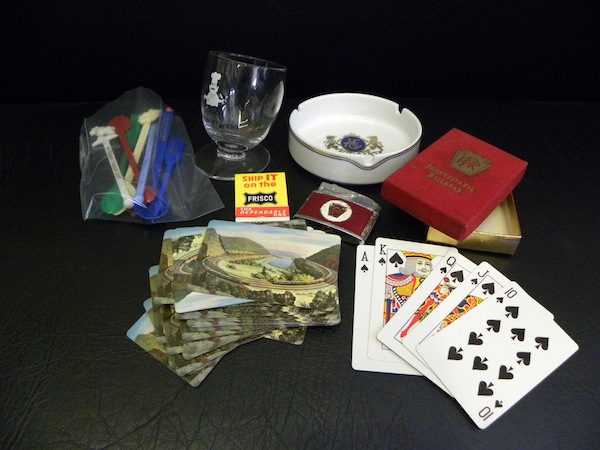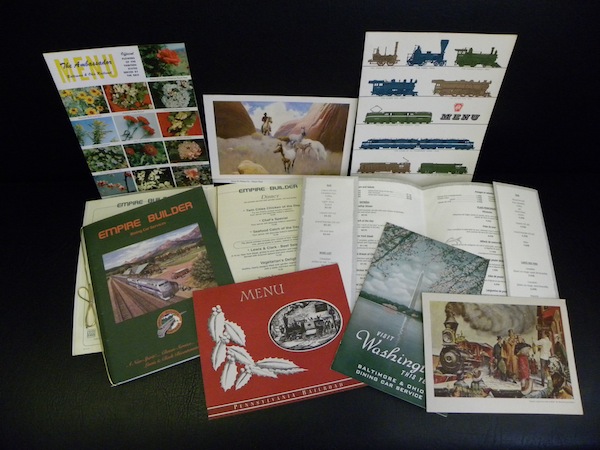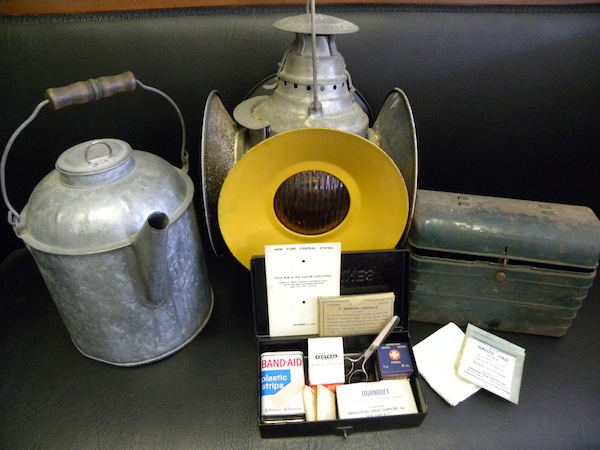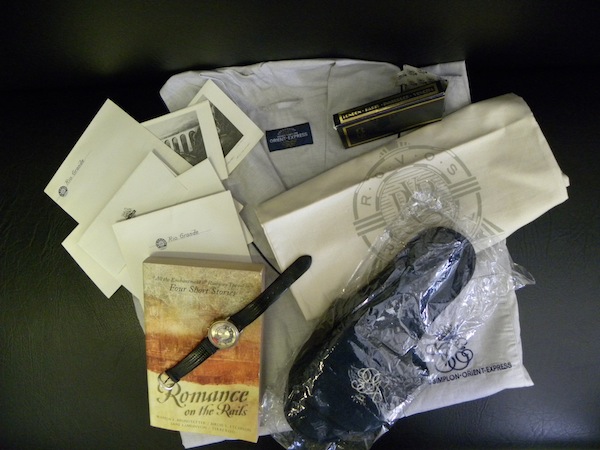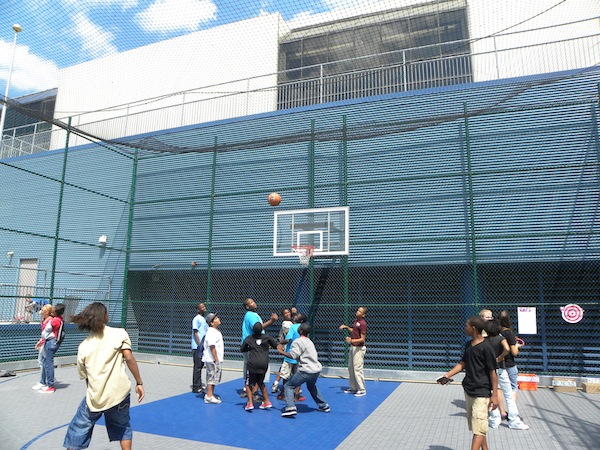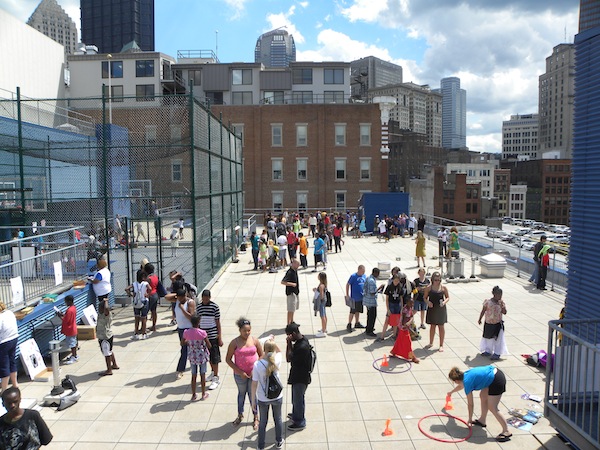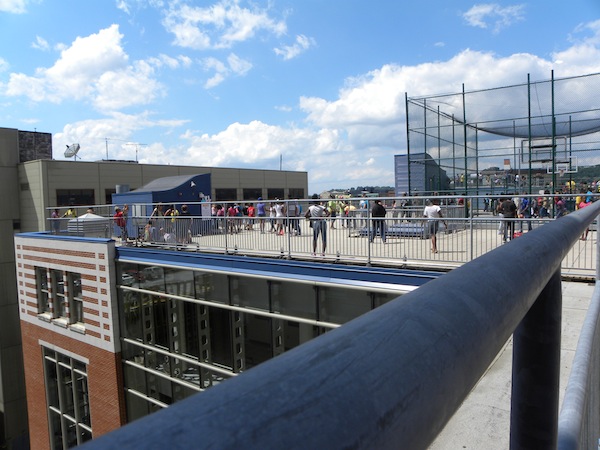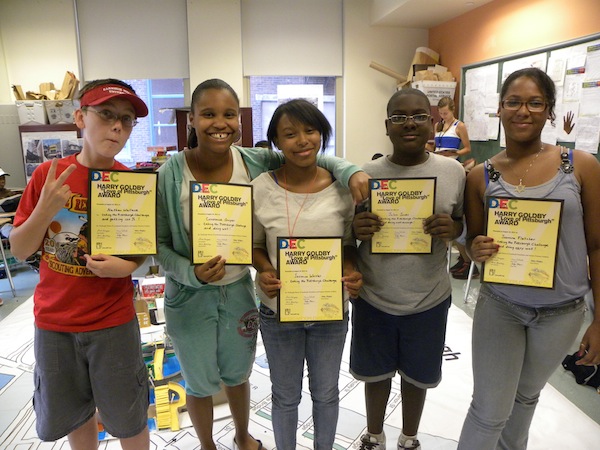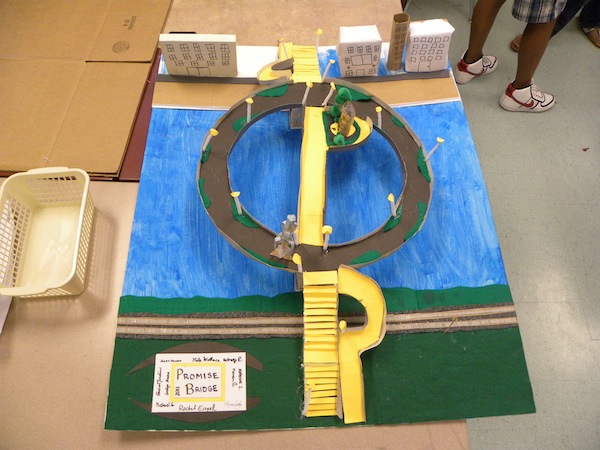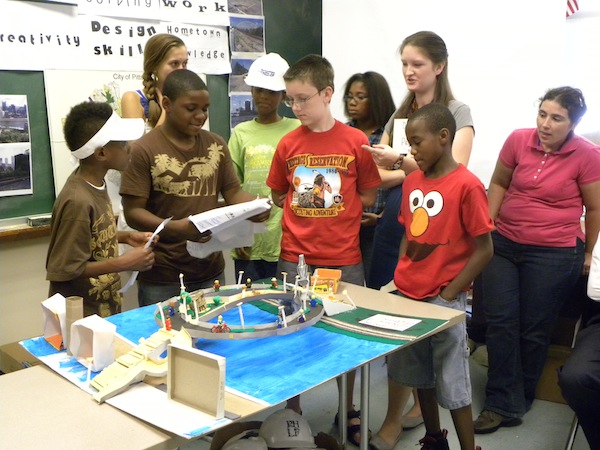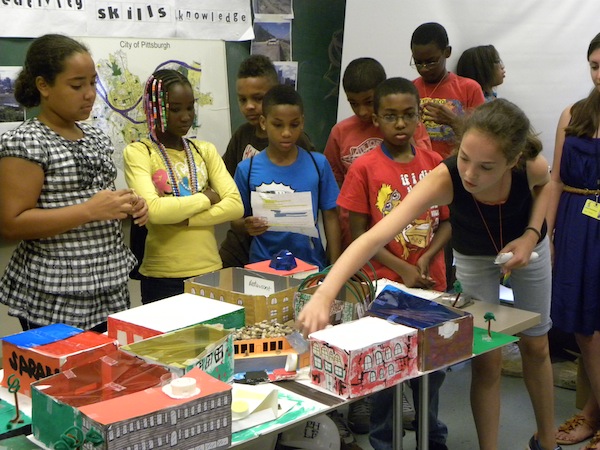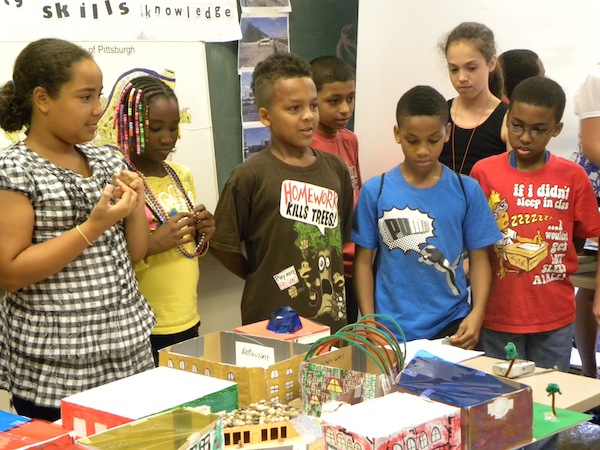
Latest News
-
Cemetery History Walk on October 29
-
Emerald View Park Trail Opens on Mt Washington
-
Fairbanks Feature: Something to Remember You By
James D. Van Trump Library | Frank B. Fairbanks Transportation Archive | Fairbanks Features
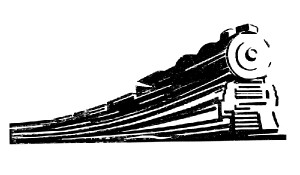 Showcasing a variety of materials located in the Frank B. Fairbanks Rail Transportation Archive
Showcasing a variety of materials located in the Frank B. Fairbanks Rail Transportation ArchiveNo. 11 Presentation
Fairbanks Feature: Something to Remember You By
Americans love remembrance items that are free or inexpensive. Having these tokens is a good way to recall a trip, long after returning home to the routine of life. In the past, the gifts from the railroads to first-class passengers were generous.
The Frank B. Fairbanks Rail Transportation Archive has some wonderful memorabilia from rail lines across the country, and even a few items from European lines. These artifacts recall a time when train travel was more than a destination: it was an event! The Archive also has some everyday common worker materials that are no longer used.
The following artifacts are just a few from our collection. All artifacts in the collection are available to view when visiting the Archive.
- When you come to the end of the day you might: Write a note on Denver-Rio Grande or Erie stationery; put on slippers and pajamas from the Orient Express; place your dirty clothes in the Rovos Rail laundry bag; and polish your shoes with a soft cloth from the Orient Express packet. Before turning out the light, read a chapter from Romance on the Rails and set your watch for the new time zone the next day, knowing the train whistle alarm on the watch will awaken you.
- Workin’ on the railroad you might: Use the four-color signal light for train messages; place oil on a squeaky wheel; enjoy your lunch from a lunch pail, well used; and take care of any mishap with the New York Central’s first-aid kit.
- What shall we have to eat? Railroad dining car personnel were proud of their food preparation and also provided beautiful menu presentations that the diner could keep as souvenirs. The Archive has close to a hundred menus from rail lines around the country. Here are a few samples: Empire Builder, of the AMTRAK line; Santa Fe Railway; Baltimore & Ohio Railroad; Pennsylvania Railroad; and VIA Rail Canada.
- The Club car was mostly a men’s domain, but not by any rule. It was really a room for those who desired a social place, as the train made its way. Playing cards, smoking, or having a drink (straight or mixed) was part of the Club car scene.
- The early trains had no dining cars. The Santa Fe Railroad provided a chain of restaurants run by Fred Harvey that served passengers at various stops along the way. The meals were good, but the Harvey Girls who served in the restaurants were the claim to fame! You might enjoy a dinner in the dining car using a Missouri Pacific placemat, a Penn Central napkin, a Horseshoe Curve Anniversary plate, and an American Orient Express cup and saucer. Mugs are a newer addition, but remind us of the P&LE and the Oil Creek & Titusville RR. To understand and appreciate the high standards of the Pennsylvania Railroad dining experience, this Pennsylvania Railroad cooking and service instruction book is a must read.
The Frank B. Fairbanks Rail Transportation Archive is open by appointment on Mondays, from 10:00 a.m. to 5:00 p.m. Use of the archive is free to PHLF members (one of the benefits!); non-members are assessed a $10 use fee.
The Archive is located on the fourth floor of The Landmarks Building at Station Square, in the offices of the Pittsburgh History & Landmarks Foundation.
To schedule an appointment, email the Librarian James Halttunen: James@phlf.org
-
Main Street Work in Dormont and Carnegie
After three productive meetings with community stakeholders in Dormont and Carnegie this spring, the Pittsburgh History & Landmarks Foundation is compiling planning documents for the two boroughs, which are the latest entrants into Allegheny County’s downtown revitalization program.
Allegheny Together, a comprehensive downtown revitalization program aimed at improving the physical attributes and businesses of its participating communities started in 2007. Since then, PHLF has served as a co-administrator of the initiative.
The program is funded by Allegheny County and its participating communities include Bellevue, Bridgeville, Coraopolis, Elizabeth, Stowe, Swissvale, Tarentum, Verona, and the two newest participants Dormont and Carnegie.
First, PHLF is putting together a strategic plan to evaluate how the commercial district currently functions, make recommendations for improvements, identify opportunities for new types of businesses based on market research, and overall trends in a variety of census data categories.
We have also been reviewing the current zoning and building codes for Dormont and Carnegie, and making specific recommendations for ways to encourage historic preservation, guide new construction, and allow for good signage. These recommendations are designed to aid the local planning commissions and councils in updating the current signage and zoning ordinances.
We examined the parking and traffic issues in Dormont and Carnegie, and have compiled a report detailing parking availability in and around the commercial district, traffic flow at key intersections, and made recommendations to alleviate any issues.
Finally, design guidelines are being finalized that will aid business and property owners in the commercial district in making appropriate physical improvements to the facades of their properties. The design guidelines are meant to be a guide, to inspire individuals to make improvements, and to be a resource for anyone that wants to understand how to make good improvements to commercial properties.
We look forward to sharing our work with the communities in the near future.
-
Historic John C. Plumer House Protected by Preservation Easement
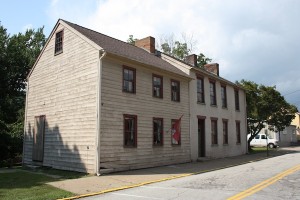 The Mon Valley Initiative (MVI) has donated a preservation easement to the Pittsburgh History & Landmarks Foundation to ensure the preservation and protection of the historic John C. Plumer House in West Newton, Pennsylvania, in Westmoreland County.
The Mon Valley Initiative (MVI) has donated a preservation easement to the Pittsburgh History & Landmarks Foundation to ensure the preservation and protection of the historic John C. Plumer House in West Newton, Pennsylvania, in Westmoreland County.Listed on the National Register of Historic Places in 1979, the original 2½-story frame house was completed in 1814 as the home of John Campbell Plumer and his new bride, Elizabeth Peaire. A brick addition was constructed in 1846.
A preservation easement is a voluntary legal agreement made between a property owner and a qualified preservation organization to protect the exterior of a historic site in perpetuity. It is recorded on the deed and filed in the Recorder of Deeds office. This easement would not have been possible without the partnership of a number of parties and a timely phone call.
“About a year ago, Ben Markle, president of the West Newton Historical Society, notified us that there was a possibility that the Plumer House might be demolished,” said PHLF President Arthur Ziegler. “When we contacted the Borough of West Newton, the owner of the property, we learned they were open to preserving the property if they could relinquish their ownership of it.”
Knowing how important the Plumer House could be to the economic revitalization of the Borough, PHLF began working with Downtown West Newton, Inc., a local non-profit group dedicated to the improvement of West Newton’s Main Street District. The organization already had a project underway with MVI. This project was a focused marketing initiative to promote the economic growth of West Newton.
These two organizations had local connections and a deep understanding of the community’s real estate market, which allowed for a strong partnership between all of the groups involved. Because of this, PHLF elected to work with MVI rather than accept a donation of the property.
“It couldn’t have worked out better,” says George Molovich, president of the West Newton Borough Council. “After learning more about preservation easements and reviewing our options, Council decided to convey the property to MVI on the condition that they donate and endow a preservation easement to PHLF and use the Plumer House to stimulate economic development.”
To help the process, PHLF deferred MVI’s contribution to endow annual monitoring costs to assure compliance with the terms of the easement and will assist MVI in marketing the Plumer House to a new owner.
“This undertaking is a wonderful example of what happens when there is an excellent relationship between an involved local Community Development Corporation, a supportive local government and strong non-profits,” says MVI Senior Real Estate Developer Patrick Shattuck. “A year ago, there was a chance that this one-of-a-kind property might be lost. Now, it is an important part of our strategic revitalization strategy for West Newton and is already attracting outside interest to this vibrant community.”
Under the easement terms, MVI and future Plumer House owners will continue to be responsible for the maintenance and upkeep of the house, and PHLF will be responsible for monitoring the property on at least an annual basis in perpetuity to assure compliance with the conditions of the easement. No changes can be made to the exterior of the building without PHLF’s prior approval and any changes should conform to the United States Secretary of the Interior’s Standards for Rehabilitation.
While granting a preservation easement on a historic property limits what an owner may do with the exterior of that property, granting the easement provides several benefits. The first and most obvious is that the property owner has protected the historic property in perpetuity from destruction, inappropriate alteration, or development of its land. Another is that an individual or corporate easement donor may be entitled to claim a federal charitable contribution tax deduction equal to the value of the preservation easement if certain conditions are met.
For example, without the federal charitable contribution deduction and rehabilitation tax credits associated with the restoration of historic properties, projects like the Bedford Springs Resort in Bedford, PA, and the Heinz Lofts and Armstrong Cork Factory Apartments in Pittsburgh, PA, might never have been developed. A charitable contribution deduction was not associated with the Plumer transaction, however, since the donor was a non-profit organization.
PHLF holds nearly 50 preservation easements and deed restrictions on Western Pennsylvania properties, and will announce another one on September 14 during its annual donor recognition event.
Pittsburgh History & Landmarks Foundation is a 501(c)(3) non-profit organization founded in 1964 whose mission is to identify and save historically significant places; revitalize historic neighborhoods; preserve historic farms and historic designed landscapes; and educate people about the Pittsburgh region’s rich architectural heritage. More information can be found at www.phlf.org.
The Mon Valley Initiative is a non-profit community and economic development coalition currently comprised of 10 Community Development Corporations whose mission is to work together to unite communities and restore the economic vitality of the Mon Valley. Downtown West Newton, Inc., is one of the member CDCs. More information can be found at www.monvalleyinitiative.com.
HISTORIC SIGNIFICANCE OF THE PROPERTY
Born in 1788, John C. Plumer was an important pioneer who spent the early part of his life trading in commodities necessary to frontier life. Upon his return from serving in the War of 1812, he was elected captain of a troop of Pennsylvania militia cavalry raised in Fayette and Westmoreland Counties and served a term of seven years.
He was active in many phases of community life. He bought a gristmill and saw mill from his brother and grew the business into one of the largest in the area. He also purchased a mill on Sewickley Creek and built a dam across the Youghiogheny River to furnish the power. Navigation was kept open by means of a lock. When a toll bridge was built to replace the ferry at nearby West Newton, Plumer supervised its construction and was a principal stockholder.
A follower of Andrew Jackson, Plumer was elected to the State Legislature in 1830 and the State Senate in 1839. Locally, he served as a Justice of the Peace and pioneered the movement for a free school system. Retiring from business in 1866, he died July 18, 1873.
-
Grant Doubles Historic Religious Property Total
Contributions Welcome Through December
“We are most grateful to the Katherine Mabis McKenna Foundation for awarding a $10,000 grant to support PHLF’s Historic Religious Property Program,” said HRP Chair George Dorman. “The Foundation has been a strong supporter of our HRP program for many years, and, as a result, we have been able to consistently provide matching grants and technical assistance to more than 100 historic worship sites in Allegheny County that are centers of art, culture, and community.”
He added, “The McKenna Foundation gift is a wonderful boost for our 2011 Historic Religious Properties fundraising campaign. Many, many thanks from PHLF, its HRP Committee, and especially from the worship sites that will benefit from this generous contribution!”
This generous grant, combined with gifts from 85 PHLF members and friends, brings our fundraising total in 2011 to $21,595. Our goal is to raise at least $50,000 this year so we can offer another round of matching grants in 2012 and begin building a $2.5 million endowment to generate $100,000 in annual income to underwrite our HRP program.
“We have four months to achieve our goal,” said Jack Miller, Director of Gift Planning, “and know that many congregations are counting on our success. They are beginning to prepare proposals to submit to our Historic Religious Properties Committee for consideration in January 2012.”
Please add your gift by clicking here and by directing your tax-deductible contribution to “Historic Religious Properties.” The success of our 2011 Annual Appeal will determine how many grants we will be able to award in 2012 to support critical restoration efforts at various historic religious properties in Allegheny County.
To learn more, please contact Jack Miller at 412-471-5808, ext. 538 or jack@phlf.org or click here to read our 2011 appeal letter.
-
Campers Present 3-D Models and CampDEC Adventure Book
Twenty-three middle school students participated in PHLF’s CampDEC (Design Explore Create) at CAPA from July 11 to August 10, offered as part of the Pittsburgh Public School’s Summer Dreamers Academy. The last two days were a double celebration: campers presented two 3-D models they created during the camp and a book about their adventure to a group of architects, parents, and PHLF members; and they participated in a Literacy Olympics on the rooftop of CAPA!
PHLF thanks the Pittsburgh Public Schools for offering Summer Dreamers for a second consecutive year and for including CampDEC as one of the afternoon activities. PHLF also thanks the Alfred M. Oppenheimer Memorial Fund of The Pittsburgh Foundation, McSwigan Family Foundation, and PHLF member Russell W. Coe for helping underwrite the cost of designing and printing CampDEC Adventure. Each camper received a copy of the full-color, 42-page book containing camper artwork, photographs, comments, and lessons learned.
What did they the campers most like about CampDEC? Their answers include the following:
- Building a model of the “Promise Bridge” on the old Wabash Bridge piers.
- Building some new attractions for one of the parking lots at Station Square, complete with a kids’ club, picnic area, shops, restaurants, and a train whistle and train ride.
- Traveling around the city on Molly’s Trolleys.
- Riding the inclines and taking the “T” to Dormont to watch cartoons in the beautifully restored Hollywood Theater.
- Exploring Pittsburgh on scavenger hunts and stopping for snacks!
- Making friends with the campers and counselors.
- Learning about our city’s proud history.
- Learning how to have fun, how to look at things differently, and how to try new things.
- Swimming in the new downtown YMCA pool, kayaking on the Allegheny, and bike riding on the North Shore.
- Making stained glass, gumdrop towers, a recycled art project, and our book, CampDEC Adventure.
-
Summer Dreamers Discover Downtown History
By Jasmine Fletcher and CampDEC campers/counselors
Pittsburgh has a lot of art and interesting buildings and places that people usually just pass by without noticing. That’s what 23 CampDEC (Design Explore Create) campers discovered during five downtown scavenger hunts. We were part of the Pittsburgh Public School’s Summer Dreamers Academy; the Pittsburgh History & Landmarks Foundation planned our afternoon camp from July 11 to August 10. We discovered Pittsburgh, not just as a city, but as a historic place.
Street names like Fort Pitt Boulevard and Fort Duquesne Boulevard clue you into the fight between the British and French in the 1750s for control of the land at the forks of the Ohio River. We even found French Street right near CAPA, where CampDEC was located. Forbes Avenue is named for the British General John Forbes who took control of this region from the French in 1758 and named Pittsburgh for William Pitt, the British statesman who planned the winning military strategy. Stanwix Street is named for the British general who oversaw construction of Fort Pitt, completed in 1761. Wood Street is named for one of the surveyors from Philadelphia who laid out the streets in 1784, at the request of the Penn family. The Boulevard of the Allies honors the soldiers who fought in World War 1. We were truly walking on history as we explored downtown.
We discovered the meanings of many different statues, murals, and sculptures. One of our favorite sculptures is on the corner of Seventh Street and Fort Duquesne Boulevard. It’s made out of all the different bridges in downtown Pittsburgh. Another favorite sculpture is the jazz musicians and dog on Liberty Avenue, across from the August Wilson Center for African American Culture. The mural of the two Andy’s on Smithfield Street near Strawberry Way is the weirdest thing many of us saw. PNC’s living wall at Fifth Avenue and Wood Street was voted the most favorite mural by CampDEC campers.
The most colorful building exterior in downtown Pittsburgh is Nola restaurant in Market Square. (CAPA, the Harris Theater, and Theater Square also have colorful exteriors.) The longest escalator, although it was being repaired, is in One Oxford Centre. The building with the most arches is the Allegheny County Courthouse. The following buildings got votes for the most spectacular interiors: Union Trust, Point Park University Center, Omni William Penn Hotel, Renaissance Pittsburgh Hotel, and PPG’s Wintergarden, where Santa Claus’ from around the world are exhibited in the winter.
Our favorite water feature is the fountain in PPG Place and our favorite green space/open space is Mellon Green on Grant Street. The corner parklet has beautiful landscaping and a dramatic fountain in the center. For the best soft serve ice cream in downtown Pittsburgh, go to a sea-creature’s house in a square, or find where a “world” and a “strawberry” survive near “Smith’s field.”
We noticed some unusual things, too. There are fake Magnolia trees across from a plaza with “eyeball” benches. There is a “B Street” in Pittsburgh––but we never found an “A” Street. The City-County Building includes a statue of William Pitt, a plaque with all the words of the Gettysburg Address, and a painting of Abraham Lincoln holding the Emancipation Proclamation, plus elevator doors that illustrate our city halls and courthouses.
We would go out on days that were “hot enough to fry an egg on the sidewalk,” according to Caquan, because we were really determined to understand the history behind the city we lived in. We went out there to get connected to the city, to get deep into the history behind the famous “steel city.” Knowing more about the city makes us care about it more.
When we leave CampDEC, we will leave with a tremendous amount of knowledge. And, we’ll never just walk down a street again without noticing, looking up, finding “scars” that show how a building has changed over time, and reading the names of places and streets to figure out their meaning for Pittsburgh. We have learned to really evaluate what’s built because even the simplest details have a history behind them. Downtown Pittsburgh is a great place for scavenger hunts and explorations.

